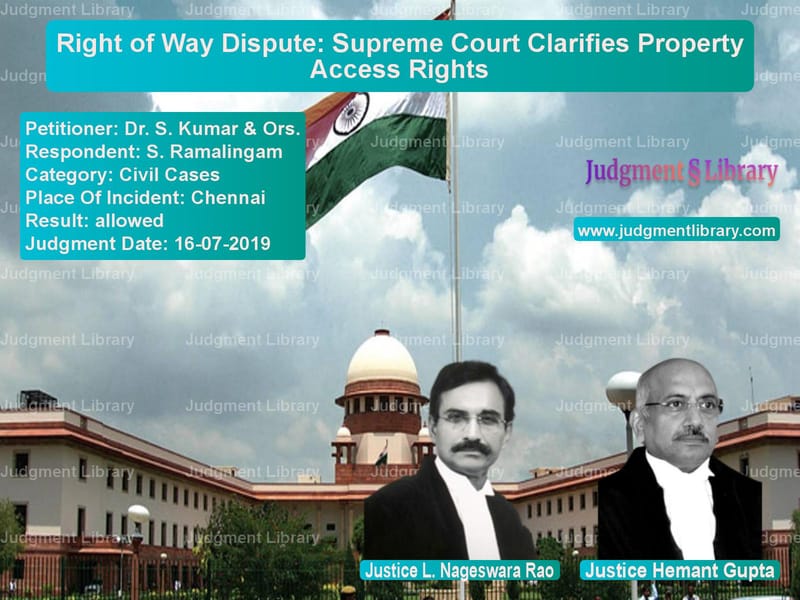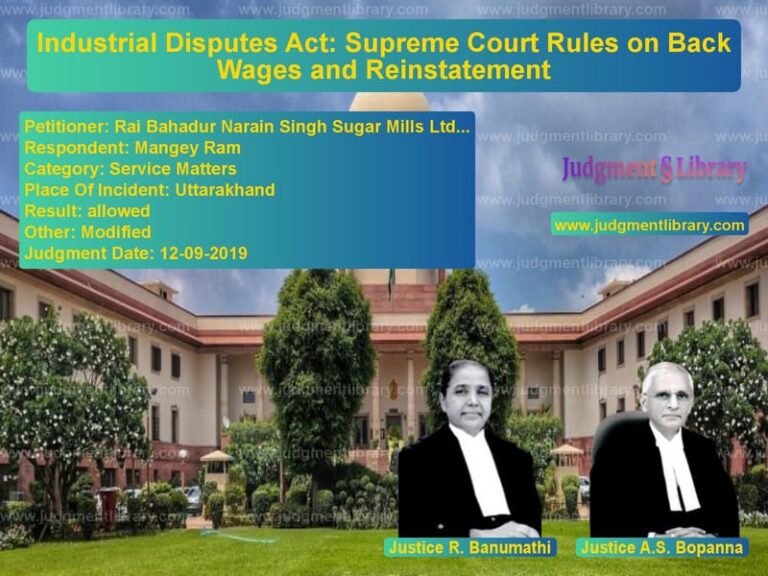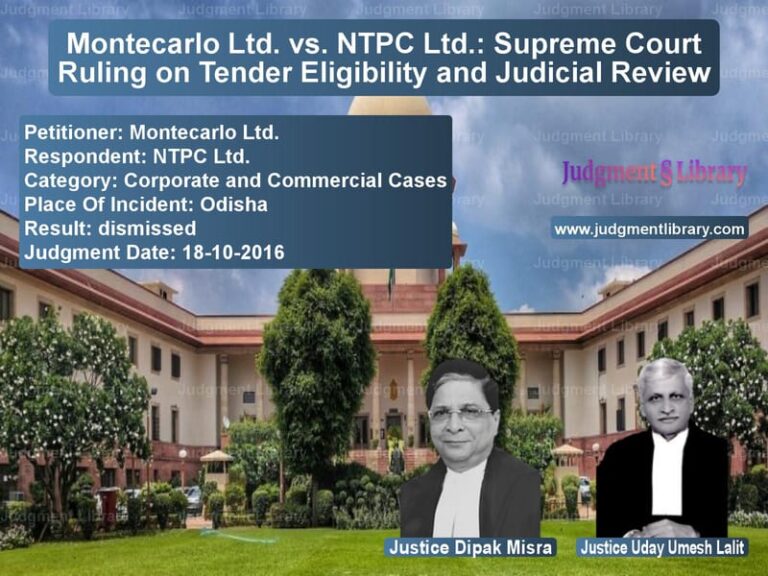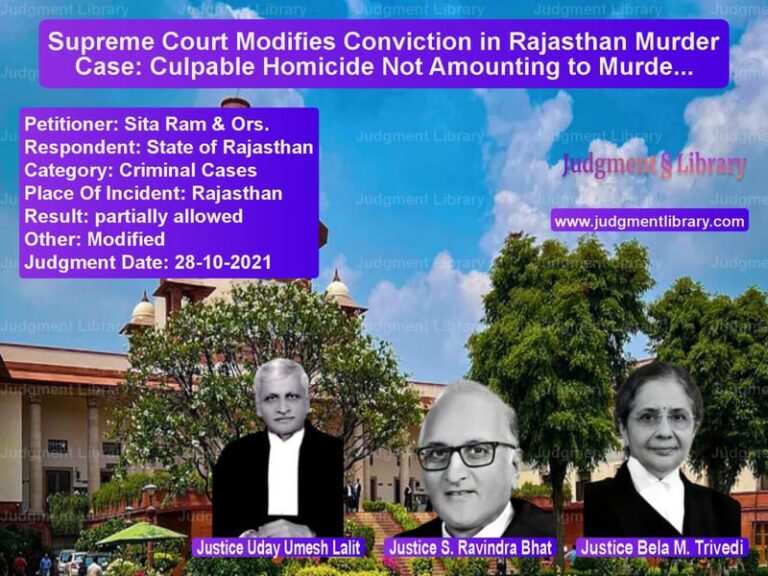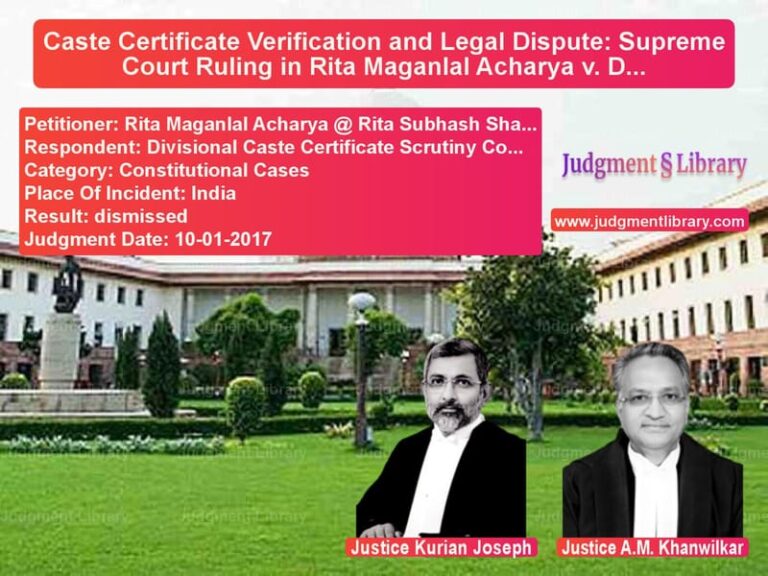Right of Way Dispute: Supreme Court Clarifies Property Access Rights
The case of Dr. S. Kumar & Ors. v. S. Ramalingam is a significant legal battle concerning the right of way over a passageway in a disputed property. The matter reached the Supreme Court after the High Court of Madras upheld the judgment of the First Appellate Court, ruling in favor of the respondent. The Supreme Court, after a detailed examination of the case, overturned the decision, granting joint access to both the plaintiff and the defendant. This case underscores the complexities of property disputes, the interpretation of sale deeds, and the legal principles governing property access.
Background of the Case
The dispute originates from a piece of land located on Mowbrays Road, Chennai. The original owner, C.L. Rajasekaran, executed several sale deeds transferring different portions of his land. The primary conflict arose regarding a 16-feet-wide passage that connected multiple plots. While the plaintiff (respondent) claimed exclusive rights over the passage, the defendant (appellant) argued that the right of way had been reserved for them in an earlier sale deed.
The matter was first heard by the Trial Court, which dismissed the plaintiff’s claim and ruled in favor of the defendants. The First Appellate Court reversed this decision, granting an injunction in favor of the plaintiff, which was subsequently upheld by the High Court. Dissatisfied, the defendants escalated the matter to the Supreme Court.
Claims and Counterclaims
Arguments Presented by the Petitioner (Defendants)
- The defendants contended that the sale deed executed in favor of defendant No. 2 (Lakshmi Shivaraman) on April 1, 1976, had already granted her a right of way over the passage in dispute.
- Since the vendor had already conferred a right of way in 1976, he had no legal authority to grant exclusive passage rights to the plaintiff in the subsequent sale deed dated May 31, 1988.
- The denial of access violated Section 48 of the Transfer of Property Act, 1882, which states that prior rights over a property cannot be overridden by later transactions.
- The defendants had been using the passage for years without obstruction, establishing a legal precedent for its usage.
Arguments Presented by the Respondent (Plaintiff)
- The plaintiff argued that his sale deed explicitly granted him exclusive rights over the passage.
- The defendants had an alternate route available from Mowbrays Road, thereby negating their claim of an easement of necessity.
- The sale deed in favor of the defendants contained general wording, which did not specifically grant them any easement rights.
- The plaintiff also pointed out that the vendor, in his witness testimony, confirmed that the passage was exclusively granted to the plaintiff.
Legal Interpretation by the Supreme Court
The Supreme Court analyzed three different layout plans attached to the sale deeds and observed:
- The sale deed dated April 1, 1976, explicitly marked the passage as part of the land transferred to defendant No. 2.
- The sale deed executed in favor of the plaintiff in 1988 attempted to restrict access, which was legally untenable under Section 48 of the Transfer of Property Act.
- Since the passage existed at the time of defendant No. 2’s purchase and was used by her continuously, she retained the right to use it.
Key Legal Findings
The Supreme Court relied on the following legal principles to adjudicate the matter:
1. Section 48 of the Transfer of Property Act, 1882
This section states that when multiple rights over the same immovable property are created at different times, earlier rights take precedence over later rights, unless a specific contract says otherwise.
The Court ruled that since the right of way had already been granted to the defendants in 1976, the 1988 sale deed granting exclusive passage to the plaintiff was legally flawed.
2. Easement by Necessity
The defendants also argued that even if explicit rights were not granted in the sale deed, they should be entitled to the right of way through easement by necessity, as their property lacked proper access.
The Court clarified that the right of easement by necessity only exists if no other reasonable access exists. Since the defendants had alternative access, this argument was not entirely applicable, but their existing rights under their sale deed were sufficient to allow access.
3. Principles of Property Law
The Court reaffirmed that property transactions should be interpreted based on the intentions of the parties and the rights granted at the time of execution.
Final Judgment
After considering all arguments and evidence, the Supreme Court ruled in favor of the defendants, stating:
“Once the land has been sold with the right of access through the land adjoining the property sold, such right could not be exclusively conferred to the plaintiff in the sale deed dated May 31, 1988.”
Accordingly, the Court allowed the appeal and ruled that the 16-feet-wide passage should be available for the joint use of both the plaintiff and defendant No. 2.
Significance of the Judgment
The ruling has far-reaching implications for property law, particularly regarding the creation and enforcement of easement rights:
- It clarifies that earlier property rights take precedence over later transactions.
- It reinforces the principle that easement rights granted in an earlier sale deed cannot be extinguished by a subsequent sale deed.
- The judgment serves as a cautionary precedent for property buyers, emphasizing the importance of thoroughly reviewing property titles before purchase.
Conclusion
The Supreme Court’s judgment in Dr. S. Kumar & Ors. v. S. Ramalingam settles an important legal question on the right of way and property access. By upholding the pre-existing rights of the defendants and ensuring that the passage remains a shared space, the Court reaffirmed the principle that property rights cannot be arbitrarily overridden. This case highlights the need for meticulous legal due diligence in property transactions to avoid similar disputes in the future.
Petitioner Name: Dr. S. Kumar & Ors..Respondent Name: S. Ramalingam.Judgment By: Justice L. Nageswara Rao, Justice Hemant Gupta.Place Of Incident: Chennai.Judgment Date: 16-07-2019.
Don’t miss out on the full details! Download the complete judgment in PDF format below and gain valuable insights instantly!
Download Judgment: Dr. S. Kumar & Ors. vs S. Ramalingam Supreme Court of India Judgment Dated 16-07-2019.pdf
Direct Downlaod Judgment: Direct downlaod this Judgment
See all petitions in Property Disputes
See all petitions in Specific Performance
See all petitions in Damages and Compensation
See all petitions in Judgment by L. Nageswara Rao
See all petitions in Judgment by Hemant Gupta
See all petitions in allowed
See all petitions in supreme court of India judgments July 2019
See all petitions in 2019 judgments
See all posts in Civil Cases Category
See all allowed petitions in Civil Cases Category
See all Dismissed petitions in Civil Cases Category
See all partially allowed petitions in Civil Cases Category

